|
11/17/2016 Interview with Artist Gabriela HandalGabriela Handal is a Panamanian artist that moved to New York City in late 2013 to study at the New York Academy of Art, and graduated in 2015 as a draughtsman with a concentration in anatomy. During her two years at the Academy she was able to come to the conclusion that her work was about the human body and what it feels like to be an adult human female. It was a depressive maze of femme fatales, strong but not threateningly strong women, super hyper sexy, “feminine” and “girlish”, always feeding from the dynamic so common between men and women, where the man is always the protective authority figure and the woman is the spunky, perky, cute, adorable, clumsy and helpless little pet with a high pitched voice. Cementing the love for the human figure through anatomical study has not stopped, and she continues to explore and come to terms with being an adult bipedal female. She produced the most recent body of work since graduating, a series of selfportraits as a victim of abuse, in which an external force in the form of a rope or a huge man hand enter the picture plane and harm her in some way. The work started as a way of dealing with unsavory experiences in previous relationships and has become a reminder of her submissive woman behavior throughout her life, in previous relationships and in society. The body of work that has recently started, maybe in opposition to the victim, or in conjunction, because they are interchangeable a lot of times, is a series of selfportraits as a whore. And “whore” only because that is what she is perceived as. “Slut”, “asking for it”, “cunt”, “bitch” or any name applied to a woman that wants to own or explore her sexuality, be assertive or confident or even just like herself a little bit. This series of selfportraits explores this ground of the not submissive woman, not embarrassed to be naked, not hiding, not trying to be skinny or “tight”, but whatever feels good for herself. Her medium of choice is graphite or charcoal over paper, because it is such versatile medium. She has the capability of being extremely precious with a drawing and develop it as much as she wants or make drawing over drawing, erase and draw, use sanding paper, brushes and charcoal powder. She has her choice in this very dense spectrum, where she can pick and choose with the precision of a pencil sharpened to a point like a scalpel. AHC: Can you talk a bit about your process, themes & inspirations? Gabriela: I have a difficult time defining and believing in inspiration to make work. I know that I get an urge sometimes to draw things, I kind of always want to draw, the act of drawing is satisfactory, finishing a drawing makes me feel very accomplished. When I see a pleasing image, I want to draw it to know it better. When there’s no specific reference or point of origin, I want to see something with my own eyes, not just with my mind’s eye, I have an urge to make it a physical thing and not just a thought in my head. I guess for themes and inspiration, the human body is the main thing. For a while now, I have thought of the human body as the first thing that my work is about. I am a fan of the human body in the doctor, sort of sterile and cold sense, but I also think that is impossible, because how can somebody not be fascinated and moved by it? We are raised, or at least I definitely grew up with very conflicting ideas about the human body, what with what I saw in commercials and glamour magazines, and to a lesser degree, at home and with family, who are also victims of the brainwashing that society puts on us, I would get comments about not going to the gym because I would look like a man or about other women dressing like “sluts”. There is this denial and fascination with the human body that I see everywhere, but I have decided to just give in to the fascination. The second thing my work is about and inspires me, is what it feels like to be an adult female human. It used to be that I loved all the strong female characters in fantasy, X-men (my favorite has always been Storm), Killer Instinct (my favorite is Orchid), Batman (my favorite is Catwoman), so the anti-heroine, the temptress, Lilith, and that always went with the idea that women can only be so strong, because then they start intimidating the men, and then who is going to be the “strongest”? So women are “crazy”, “moody”, “strong for a girl”, “sexy”, “feminine”, independent, but always succumb to a strong male protector that “tames” her, so it was this really confusing oxymoron. Then upon starting my study at the New York Academy of Art, I started doing almost exclusively self-portraits, my conclusion was that I couldn’t believe I was studying art in New York, so I made images of myself to see myself here with my own eyes (back to that seeing something in front of me, looking in the mirror wasn’t enough), and then it became that I was trying to figure out what the woman oxymoron was for me and I started with imagery where I still was trying to appear “pretty”, and then I started to explore and distort my face and body and it sure is liberating. There’s not that much to the process, I beat up my paper, trying to figure out the image while on the paper. I erase and draw again as many times as I need to, and I try my best to not care about getting it right the first time and not be afraid to move things or start over. AHC: What first drew you to art? Was there a specific moment in your life or turning point where it became clear to you that you were being called to create? Gabriela: I’m really not sure because it has always sort of been there. Around my early 20s I think I decided I wanted to study art, some time after I was comfortable referring to myself as an artist, but I think only recently I am really prioritizing it and trying as much as I can to produce work. AHC: Who are some of your artistic influences? Is there anyone outside of the art world who has had a huge impact on your work or who just generally inspires you, writers, filmmakers, musicians etc? Gabriela: Some of my first influences were Boris Vallejo, Luis Royo and Dorian Cleavenger; these dudes work within the spectrum of woman that I was describing in the first question, which is fine, because they are also victims of the same brainwashing, but I wouldn’t have been able to put my finger on that at all when I was fascinated with their work. I wanted to be like these women that were in very uncomfortable situations that somehow managed to remain bombshells and in control, and just seem comfortable regardless of the situation. These days, two artists that I seriously love are Anne Harris and Maya Kulenovic. Anne, because her work is also almost exclusively self-portraits and she is also exploring the woman thing, and Maya because her aesthetic is so satisfying. Outside of the visual arts world, I consider Trent Reznor to influence, inspire and impact my work and I. I find it incredibly inspiring how never stopped making music or wanting to make music or thinking about making music. I also find it incredibly inspiring that he has done many of the things that he set out to do when he was much younger, like scoring films and making music with a woman vocalist. He is my biggest inspiration as an artist and as a person, because he has always stayed faithful to his artistic vision, his overcoming addiction and making music throughout deep struggles, recovery and soberness, landing in a beautiful and healthy relationship that he treasures and appreciates. Dan Carlin is another guy that gives me fuel. I listen to his podcasts when I draw and I really like how he just gets down to it, just talks about the subject, no radio background sound effects (at least not anymore), and tries really hard to give unbiased information. I haven’t listened to all of his podcasts yet, but my two favorites so far are The Wrath of the Khans and Blueprint for Armageddon. So he is inspiring in that he is doing something, podcasts/new media, is good at it, is faithful to his vision of what he wants to deliver with the podcasts and is successful. AHC: How have your views of feminism changed since starting this latest series of drawings? What were your views beforehand and what brought about this reexamination or re-translation for you personally and artistically, and how do you see it playing out in your work and your life now? Gabriela: My understanding of feminism has evolved constantly long before I even considered the self-portraits as a victim. I look back and remember all kinds of horrible things that I thought, said and felt, things that other people around me still say. I went through being embarrassed and hesitant to call myself a feminist, the slut shamming and victim blaming of other people, to wanting to embody the impossible woman I talked about earlier, to now. Now I feel like I’m beginning to get it, or just going with what makes the most sense to me, that feminism is about equality and respecting whomever you come in contact with, regardless of who they are. For me it is extremely important to remember that everyone is a human and a person, before they are anything else, we are not infallible or absolute, and that we are extremely complex and versatile. I don’t know what brought about the evolution in my case, and I get frustrated that other people still judge and hate other people because they don’t fit into the “woman” or “man” mold or whatever they think is “right” for a person to be, when I think we are way beyond that point. Or I just think that if I could move beyond that, so can everyone else. I would say that the work has been influenced by my views in that it feels like it is even more about the human body, curiosity for it, admiration, being humbled by it, and learning more about myself and my own body, exploring things beyond the self-portraits as a victim. AHC: This current work comes from a very painful, scary place, yet in creating these drawings there is a certain reclaiming of an indelibly innate strength, narratively, visually, emotionally, for you, and I would imagine for other women with similar experiences. How have these drawing been received, have others relayed similar stories or a feeling that they got from the work that has resonated with you? Has creating through these difficult experiences, memories, pain and conflict helped you to sort and sit through what happened and to foster a type of resistant, surviving and creative energy which breaks through and does not lower its voice, so to speak, that says what needs to be said and does not shy away from bearing and being the truth of one's experiences, both as a female and as an artist in this world? Gabriela: The reception of the drawings is really interesting. Some people think they’re BDSM, that they look staged, that I should be careful using that visual language, other people think they’re really erotic and sexy, and other people consider them a criticism of violence against women. One or two have mentioned the drawings hitting really close to home. I don’t remember anybody telling me specifically “I went through that, too”. I have no intention of speaking for anybody except myself, which is part of respecting everyone else and being very aware that I have no physical way of feeling what anybody else feels, that’s quite impossible. I welcome every reaction to the drawings, all the thoughts are valid, because everyone’s visual language is different, I don’t get offended if somebody thinks the drawings are hot, because if they’re into that sort of sexual relationship, all the power to them, and I don’t get offended if somebody thinks that the drawings are speaking out against violence against women and that I’m trying to make a political statement. Making the drawings was a process, it took about the amount of time that I was at the New York Academy of Art and I made most of them in the last quarter of my studies there. I was sort of putting it off, skirting around the subject, how uncomfortable I was with the experience that triggered my need to make the drawings. I actually hesitate to use the term “abusive relationship”, I’m really not sure if that is what I experienced, although I’m also aware it is a very ample spectrum and lots of things fall into “abusive relationship". Some time after I was in this relationship and a considerable amount of time being single and having casual relationships, I wanted to have a nice, steady, long term, healthy relationship, but I would look at a guy I found attractive and my first thought would be “he could rape me” or “he could beat me” and that really didn’t seem as healthy to me, before that I found myself just shielding myself from showing my vulnerabilities to people, not wanting to cry in front of people or talking about my feelings. Right before I did the self portraits I made some imagery of vulvas and mouths and titled them “storage space”, because I wanted to see what it was like to actually see the female body as an object and just not see a person, and really that is messed up to know that lots of people see others as an object, the same as a chair or a desk. I’m really not entirely sure how I landed in the self-portraits, I knew that I was developing an unhealthy fear of physical abuse or ending up in a relationship where I would get beaten and not be able to defend myself or remove myself from the situation, so the drawings were a way of facing that fear, by seeing myself in the situation. Back to having to see things with my own eyes. Some of the drawings cite specific things that happened in the relationship I was in, the face grabbing (which was actually slapping, but face grabbing works for me in the drawings), and hair pulling, for example, and the other things were a continuation of the exploration of physical abuse. It’s not to say that I am not at risk of ending up in a violent situation anymore, everyone is always at risk of that, but making the body of work was very cleansing and helped me deal with it so that it’s not a constant worry. AHC: You've written that the work is made in opposition and in conjunction with the role of the victim, something you see as interchangeable, could you talk some about this? And also about this 'not submissive, not embarrassed, not hiding', strong woman that does what feels right and good for herself? What advice would you give to women struggling to embrace and be who they need to be? Gabriela: I’m not sure whether I’m the one that sees the role of “slut” and “victim” as interchangeable, it occurred to me that that’s what I perceive other people see, that’s what I pick up in the news if I see a sort of story where a woman comes out with accusations of sexual assault against a man. I see a victim that is doggedly demanding her issue get resolved and the public reception is that she was somehow asking for it by dressing in a certain way or doing a certain thing, that makes it so that not only does she deserve the sexual assault, but she actually wanted it. And I think maybe that’s why I started thinking of the self-portraits as a whore as a continuation or like the B side of the self-portraits as a victim. At first that was not the case, it was just another thing I wanted to explore: how I might be perceived as a sexually active female. With “not embarrassed, not hiding, not submissive”, I’m thinking of owning myself, sort of. It took me a while to own my body and myself, like for example before, if I was in a relationship I thought I couldn’t go out with friends or put up a nude photograph if I felt like it, or like I had to ask permission to do certain things. It’s the stereotypical male and female dynamic in a relationship, the power struggle and the battle between the sexes, I thought I had to play along with that, and it took me a long time to leave my armpit hair, stop shaving my eyebrows, cut my hair really short, this kind of thing that somehow immediately invalidates the “woman” mold. And not just in the dynamic of the male and female relationship, but how a woman is supposed to wear certain things that are “flattering” to her figure, depending on weight and age? I just don’t understand why do we do this to each other. So it took me a while to remove myself from that and begin to own my body again. I’ll do certain things that make me uncomfortable sometimes, precisely to try to break the womansuit that I’ve been imprisoned in. The latest challenge has been leg hair and I gradually get more comfortable with leaving it there and going out with shorts and flip flops and it amuses me, and I shave whatever body part exclusively if I feel like it and remember to do it, not because I feel obligated to keep up with something. I don’t know what advice to give to anyone. It was a process for me and it continues to be a process that is not simple or easy, I’m going through my own process, we all have our own, it’s organic and very specifically tailored to each person and all their own personal variables. I think everyone should listen to their gut instinct and do what feels right for themselves, regardless of the discomfort or unfamiliar ground it might take them to. Or at least try sometimes. AHC: What is the first work of art you encountered that took your breath away? Gabriela: Strangely, this has been the most difficult question to answer and I left it for last to have lots of time to think about it, but I still sort of can’t think of a specific work that took my breath away. I’m thinking of stuff that I haven’t seen in person, but that I couldn’t look away from and wanted more of, and things that I’ve seen in person that caused me to tear up. Dorian Cleavanger has a painting titled “The Gift”, which was my favorite painting for the longest time. It’s this woman that has the Y incision on her torso, has piercings in all sorts of places, her irises are barely visible. The image comes off to me a very violent, there’s hatred in her eyes, it’s like she’s really angry and insane, she has this snarl on her face. It turns out that the gift which is spoken of in the title is her heart, which is in a gift box that is in front of her. Very beautiful and tragic. These two that I saw in person at the MET’s drawing room, I’m not sure if that’s what that room is called, but you schedule an appointment and look at drawings from the masters, I saw the Libyan Sybil by Michelangelo and a sketch by Leonardo DaVinci. And the Libyan Sybil made me tear up. These were two very very serious guys, and thinking that they breathed on these little drawings, that they touched the paper with the side of their hand while they held their pencil, they had an internal dialogue whilst looking at their drawing, blew me away. The Libyan Sybil is so delicate and precious, I’ve seen the drawing so many times in books, but seeing her in person was very moving. AHC: Do you have any upcoming exhibits or new projects you'd like to tell people about? Gabriela: I’m currently working on this body of work of self-portraits as a whore, and I want to find a space in which to show them alongside the self-portraits as a victim, and show everything together. I also have this fantasy/project (fantasy, because it looks like it might take a while) in which I collaborate with perhaps up to 20 fellow visual artists and then I show the work in a gallery or any space that lends itself to it. I have a completed artwork and a second in progress for this project so far! As we speak, also, I am part of a four woman show in Brooklyn, at Freddy’s Bar and Backroom until December 3rd, where some of my anatomy oriented work can be seen. For more visit gabrielahandal.com/ And Freddy's Bar and Backroom @ freddysbar.com/ Comments are closed.
|
AuthorWrite something about yourself. No need to be fancy, just an overview. Archives
April 2024
Categories |
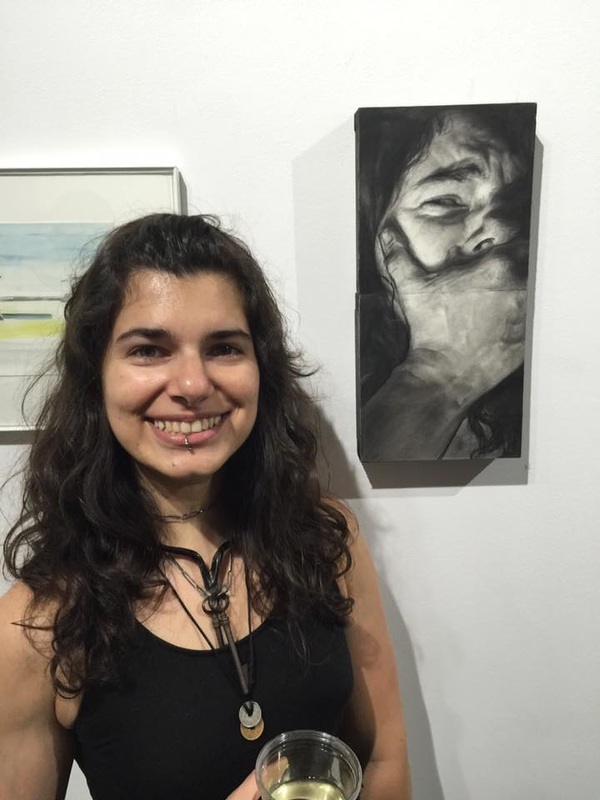
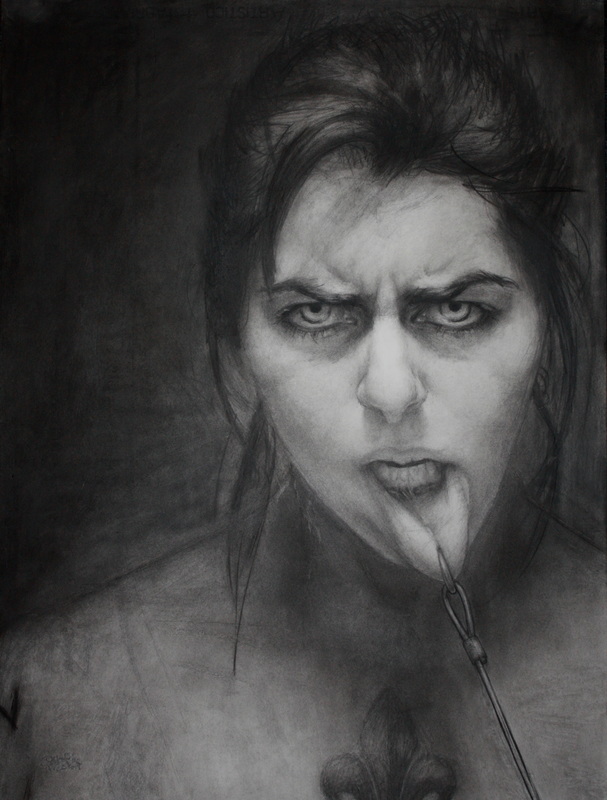
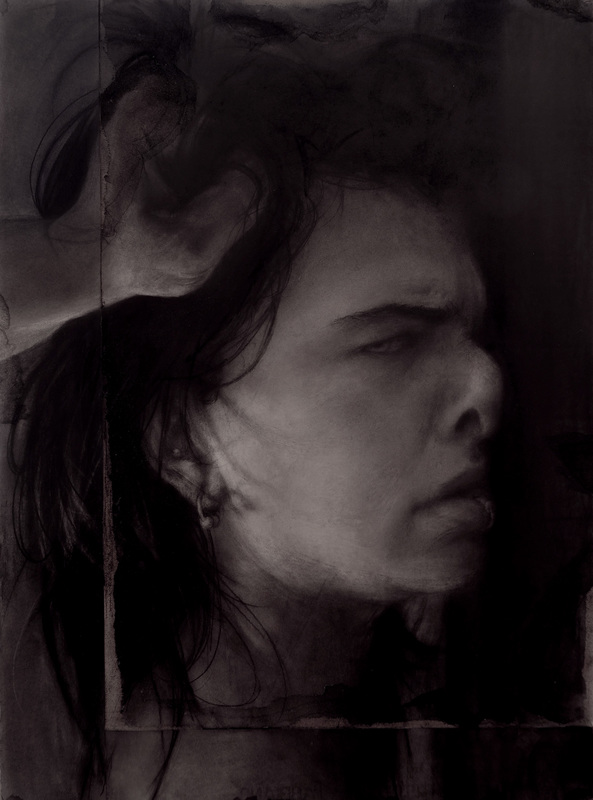
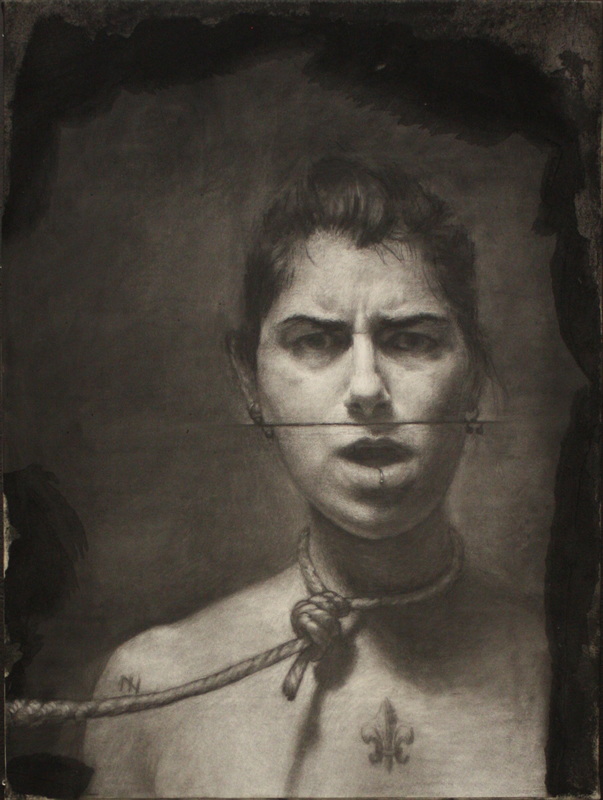
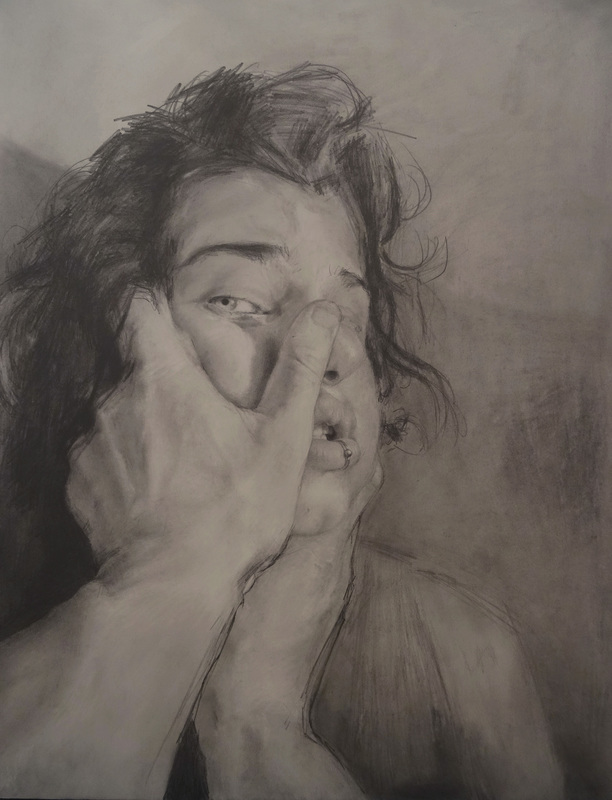
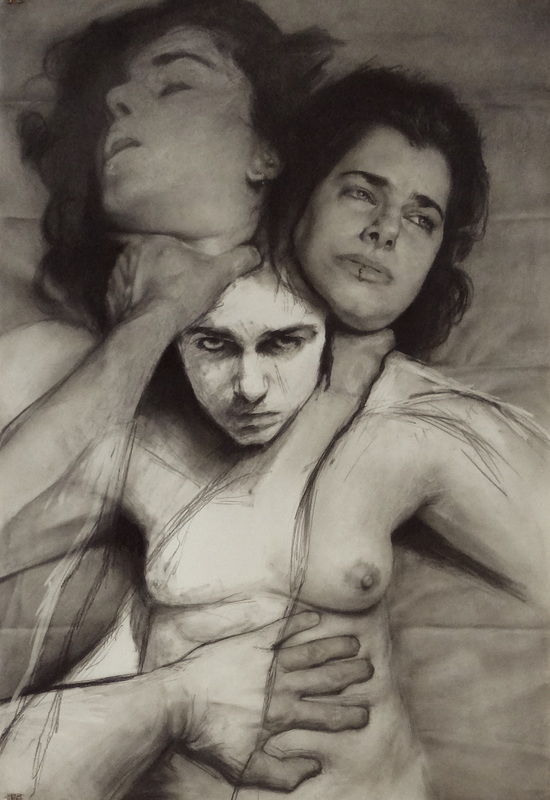
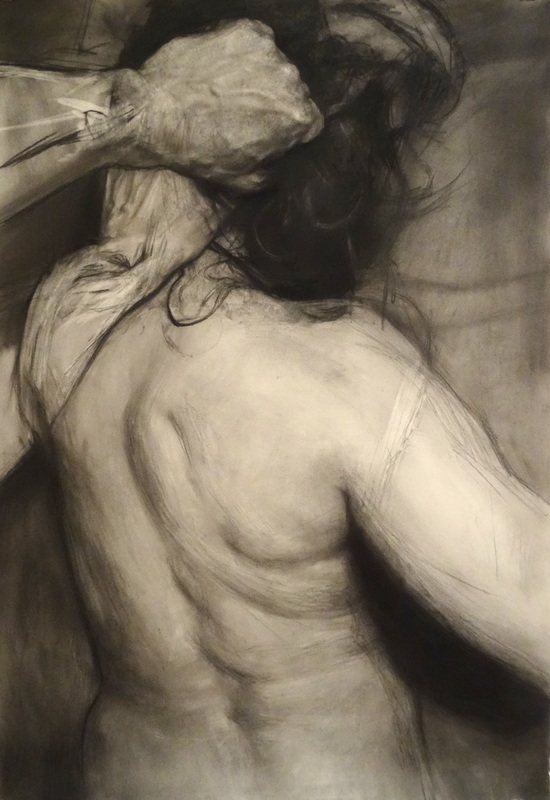
 RSS Feed
RSS Feed
